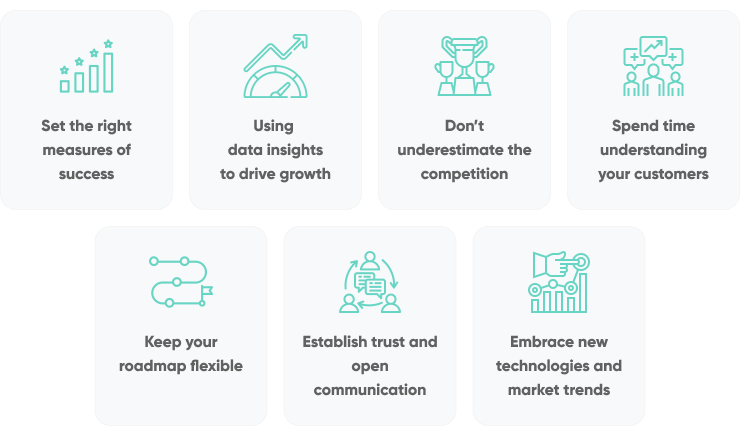Discover the secrets of stretching your SaaS budget to the maximum on a marketplace with these 7 powerful strategies!
 Image courtesy of Karolina Grabowska via Pexels
Image courtesy of Karolina Grabowska via Pexels
Table of Contents
Software-as-a-Service (SaaS) has revolutionized the way businesses operate, providing cost-effective solutions for various needs. However, without proper optimization, SaaS expenses can quickly spiral out of control and impact the bottom line. In this blog post, we will explore seven proven strategies to help businesses maximize their SaaS budget on marketplaces.
Evaluating Your Current SaaS Usage
Conducting a Comprehensive Audit
Before optimizing your SaaS expenses, it’s crucial to understand your current usage and expenditures. Conducting a comprehensive audit involves identifying all existing SaaS subscriptions and evaluating their value. Take the following steps:
1. Identify all existing SaaS subscriptions and expenses:
Review your financial records and documentation to create a comprehensive list of all the SaaS tools your business is currently using. This includes both primary and secondary subscriptions.
2. Determine the usage level and value generated from each subscription:
Evaluate the level of engagement and value generated from each SaaS tool. Are you fully utilizing its features, or is it underutilized? This analysis will help you identify any redundancies or unnecessary subscriptions.
Analyzing Subscription Redundancy
While SaaS tools offer unique functionalities, it’s essential to assess if there is any overlap in their capabilities. To analyze subscription redundancy and maximize your SaaS budget, follow these two steps:
1. Evaluate if certain SaaS tools overlap in functionality:
Compare the features and functionalities of multiple tools to identify any potential overlaps. If two or more SaaS tools serve similar purposes, consider consolidating or eliminating redundant subscriptions.
2. Assess the necessity and value of each tool for the business’s specific needs:
Review the relevance and value that each SaaS tool brings to your organization. Determine if it is essential for your business and if the value it provides justifies the cost. This evaluation will help streamline your SaaS stack and optimize your expenses.
Negotiating Contracts and Pricing
To maximize your SaaS budget, it’s crucial to understand the contract terms and negotiate for more favorable conditions. Follow these steps:
1. Research and comprehend contract terms, renewal conditions, and potential penalties:
Carefully review the terms and conditions stipulated in your SaaS provider’s contract. Pay attention to auto-renewal clauses, penalties for early termination, and any price increase clauses. Understanding these terms will empower you during negotiation discussions.
2. Seek flexibility and scalability in contract agreements for better cost optimization:
Discuss with your SaaS provider the possibility of flexibility in contract agreements to cater to your evolving needs. Request the option to upgrade or downgrade subscriptions as your business requirements change. Scalable contracts will allow you to align your expenses with your actual needs, providing potential cost savings.
Leveraging Customer Success Teams
Engaging with customer success teams can help you negotiate better pricing and maximize your SaaS budget. Consider the following steps:
1. Engage with SaaS providers’ customer success teams to negotiate pricing:
Reach out to your SaaS provider’s customer success team to discuss pricing options. Demonstrate the potential long-term value your business can bring to the provider and inquire about any available discounts or customized packages.
2. Demonstrate the potential for long-term value and request discounts or customized packages:
Share your growth plans and how the SaaS tool will play a vital role in achieving those objectives. By emphasizing your long-term value, you can negotiate for discounted rates or customized pricing plans that better suit your budget.
Exploring Cost-Effective Alternatives
Open-source software solutions can serve as cost-effective alternatives to some SaaS tools. Consider these steps when exploring open-source options:
 Image courtesy of www.softkraft.co via Google Images
Image courtesy of www.softkraft.co via Google Images
1. Explore if open-source alternatives can fulfill business requirements:
Research and evaluate open-source software solutions that cater to your specific business needs. Determine if they offer the same functionalities as the SaaS tools you currently use.
2. Evaluate total cost of ownership and compatibility with existing systems:
Take into account the total cost of ownership of the open-source alternative, considering factors like implementation, maintenance, and potential customization. Additionally, ensure compatibility with your existing systems for seamless integration.
Exploring Subscription-Sharing Opportunities
Collaboration with partners or industry peers can help share SaaS subscriptions and distribute costs. Follow these steps to explore subscription-sharing opportunities:
1. Collaborate with partners or industry peers to share subscriptions and costs:
Identify trustworthy partners or industry peers who share similar software needs and collaborate to share the costs of SaaS subscriptions. This arrangement can significantly reduce expenses while allowing access to necessary tools.
2. Ensure legal and contractual compliance when entering such arrangements:
Prioritize transparency and legal compliance when sharing subscriptions. Ensure the arrangement adheres to the terms and conditions of the SaaS provider’s contract while safeguarding the interests of all parties involved.
Monitoring and Controlling Usage
Establishing clear usage limits and permissions can prevent excess costs and ensure responsible SaaS expenditure. Consider these steps:
1. Set clear guidelines for usage limits to prevent excess costs:
Define and communicate usage limits for each SaaS tool across the organization. This ensures that employees use the tool within reasonable limits and prevents any unforeseen expenses due to excessive usage.
2. Assign appropriate access and permissions based on job roles and responsibilities:
Grant access and permissions to SaaS tools based on employees’ roles and responsibilities. Restricting access to only necessary individuals reduces the risk of unauthorized usage and unnecessary expenses.
Implementing Monitoring and Alert Systems
Proactive monitoring and alert systems can help track SaaS usage and control expenses in real-time. Follow these steps to implement such systems:
1. Utilize monitoring tools to track SaaS usage and expenses in real-time:
Choose monitoring tools that provide real-time insights into your SaaS usage and expenses. These tools allow you to keep a close eye on patterns, identify potential discrepancies, and make informed decisions accordingly.
2. Set up automated alerts to notify relevant stakeholders of potential overspending:
Configure alerts to notify key stakeholders whenever a certain threshold of SaaS expenditure is reached. This ensures prompt action can be taken to control expenses and optimize budgets.
Regularly Reviewing and Optimizing SaaS Stack
Ongoing reviews play a vital role in ensuring your SaaS stack remains optimized and aligned with your business needs. Consider these steps for implementing a review cadence:
 Image courtesy of www.softkraft.co via Google Images
Image courtesy of www.softkraft.co via Google Images
1. Schedule periodic reviews to assess the continued relevance of SaaS tools:
Set up a regular review cadence to evaluate the performance and relevance of each SaaS tool. This allows you to identify any outdated or underutilized tools that can be replaced or eliminated.
2. Consider the evolving business needs and technological advancements:
Stay updated with market trends and evolving business needs. Consider how new technological advancements can enhance your operations and determine if adding or replacing SaaS tools could bring better value and cost-effectiveness.
Embracing Flexibility and Experimentation
Creating a culture of flexibility and experimentation can lead to better optimization of your SaaS stack over time. Encourage the following practices:
1. Encourage teams to test new tools and compare performance against current ones:
Promote a culture of experimentation where teams can try out new SaaS tools and compare their performance to the existing ones. This allows you to assess potential alternatives and select the most cost-effective options.
2. Embrace a culture of innovation and continuous improvement to optimize SaaS expenses:
Encourage employees to provide feedback and suggestions for improving your SaaS tool stack. Foster a culture of innovation and continuous improvement, where optimization of SaaS expenses is an ongoing effort.
Conclusion
Optimizing your SaaS expenses on marketplaces is crucial for maximizing your return on investment. By evaluating your current usage, negotiating contracts and pricing, exploring cost-effective alternatives, monitoring and controlling usage, reviewing and optimizing your SaaS stack regularly, businesses can achieve significant cost savings while maintaining the benefits of SaaS tools. Implement the strategies outlined in this guide to maximize your SaaS budget and drive better efficiency and profitability. Share your success stories in the comments below!




